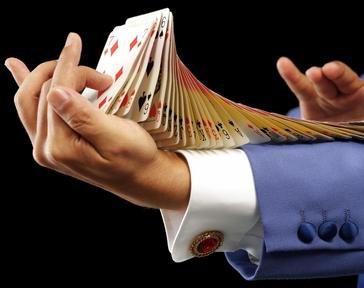Quiz Answer Key and Fun Facts
1. Who doesn't like to be entertained by magic? Trying to figure out how it's all done is part of the fun. David Wighton was born in London, England in 1868. He is best known for the Mascot Moth illusion in which a woman vanishes into thin air. David Wighton is better known by his stage name. What is it?
2. The ability to make an object disappear is one of the most impressive illusions that can be performed because it seems to contradict the laws of nature. The use of mirrors is especially effective when performing a particular illusion in which a person disappears into a special cabinet that has been wheeled on stage. This cabinet has a name. What is it?
3. Many illusionists use misdirection to trick their audiences. One illusionist, born in 1849, was a master at misdirection. In fact, some believe that he was the inspiration for the character of the wizard in L. Frank Baum's book "The Wonderful Wizard of Oz." Name this illusionist.
4. Another master of misdirection is this illusionist with the same name as a character in a novel by Charles Dickens. He has performed live on stage as well as in TV specials. He once made the Statue of Liberty disappear. Who is he?
5. Gravity is a law of physics. The larger the object, the greater the gravitational pull. But what happens when an illusionist appears to levitate right in front of an audience? Doesn't this defy the laws of physics? One Belgian illusionist took levitation once step further to create one of the greatest illusions of all time...a levitating woman who vanishes in midair! It happened in 1910. What is the name of this illusionist?
6. Considered to be "The Father of Modern Magic," this French magician performed his mesmerizing tricks in Europe during the 1840s and 1850s. The "Light and Heavy Chest" was one of his most famous tricks. Name this magician.
7. Known as much for his endurance as he is for his illusions, which modern-day illusionist once stood atop a 100 ft. pillar for 35 hours?
8. Claude Conlin was a magician with a disreputable past. He had been married seven or eleven times, depending on which source you believe. He was a con man and imprisoned for fraud. However, his success at mind reading was indisputable. He wowed audiences during the height of his career in the 1920s. What was Conlin's stage name?
9. Exotic animals have been used in magic acts before but Siegfried and Roy, originally from Germany, became known for their acts using exotic lions and tigers. At which Las Vegas hotel did they work their magic?
10. Sigmund Neuberger was a German-born illusionist most famous for his trick called "The Lion's Bride." What was Neuberger's stage name?
Source: Author
nmerr
This quiz was reviewed by FunTrivia editor
kyleisalive before going online.
Any errors found in FunTrivia content are routinely corrected through our feedback system.

